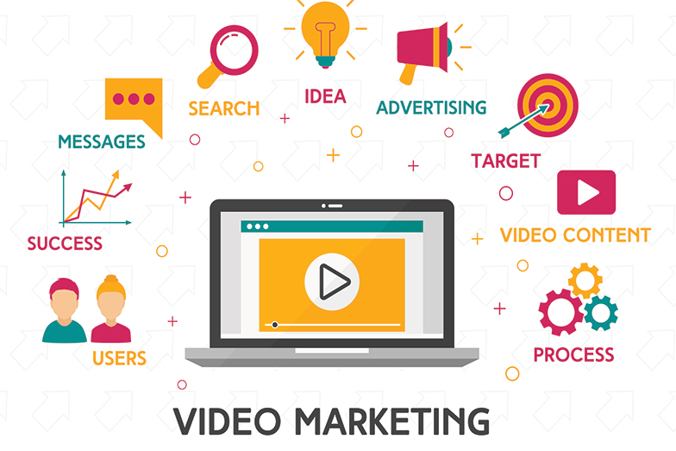A comprehensive guide to video advertising and marketing
Video advertising involves using moving images, sound, and narrative to promote a product, service, or brand. It appears in formats like:
In‑stream ads: pre‑roll, mid‑roll, post‑roll within video content
Out‑stream ads: auto‑playing videos on webpages or in‑feeds
Social video: short-form clips (e.g., TikTok, Reels)
Connected TV (CTV) / OTT ads: on smart TVs and streaming devices
Why does video advertising exist?
Human engagement: motion, sound, and storytelling naturally draw attention.
Platform evolution: as streaming and mobile apps grew, video replaced static ads.
Better targeting and tracking: digital formats allow precise audience targeting and measurable results.

Importance: Why It Matters Now
Who is affected?
Brands and advertisers: seeking effective, measurable engagement.
Consumers: exposed to thousands of ads daily—and highly unskippable ones.
Platforms and publishers: depend on video ad revenue.
Key problems video ads solve:
Capturing attention in an age of diminishing attention spans.
Personal relevance: serving targeted content increases resonance.
Performance tracking: clear metrics on views, clicks, purchases.
Brand storytelling: engaging narrative formats build emotional connection.
Recent Updates: Trends & News (Past Year)
Explosive growth in spending
In the U.S., video ad spend is projected at $131 billion in 2025, growing from $112B in 2024; mobile accounts for ~$85B and CTV about $33B
Digital video is forecast to capture nearly 60 % of total TV/video ad spend in 2025, doubling its share from 5 years ago
Short‑form and mobile domination
Over 66 % of video ads now are under 30 seconds, popular on TikTok, Reels, Short
Short‑form content drives over double the engagement compared to longer forms
AI and automation
AI tools are widely used for scriptwriting, editing, avatars, personalization, and real‑time optimization .
Research (April 2025) introduced VC‑LLM, an AI system capable of generating short‑form ad videos automatically
Interactivity & shoppable ads
Interactive ads—polls, mini‑games inside videos—are growing
Shoppable video ads, letting viewers click to buy, yield up to 60 % more conversions
Accessibility spotlight
Only ~10 % of global TV ads include closed captions or audio descriptions—up to 75 % of viewers use captions
Improving accessibility boosts ad recall by 8 % and brand linkage by 18 %
Rise of creator‑driven content
In 2025, creator-based social content (YouTube, TikTok) generated more ad revenue than traditional media for the first time
Revenue from creators is expected to reach $376 billion by 2030
Laws & Policies Affecting Video Advertising
India
Broadcasting Services (Regulation) Bill, 2023 (pending): proposes oversight through a new Broadcasting Authority of India, self‑regulation, data localization, and content standards
Since June 18, 2024: digital advertisers must file a Self‑Declaration Certificate (SDC) via the Press Council portal to prevent misleading claims
The Advertising Standards Council of India (ASCI) enforces voluntary self‑regulation; its Code requires ads to be truthful, decent, and non‑misleading .
Global & platform policies
Privacy laws (GDPR, CCPA) impact targeting and require consent for data use.
Platforms (Google, Meta, TikTok) enforce content policies: no misleading claims, restricted content, political ads regulations.
Ad accessibility guidelines vary by country—some mandate captions for public video ads.
Tools & Resources
Creative production & AI tools
VC‑LLM (research): automated short‑form ad creation
Platforms offering AI avatars, script generation, auto‑captioning (e.g., Descript, Synthesia, Pictory).
Programmatic & campaign management
Google’s Performance Max, Meta’s Advantage+, TikTok AI creative tools
Ad platforms for self‑serve CTV and OTT (e.g. The Trade Desk, Roku, Amazon Ads).
Analytics & optimization
Tools: VidIQ, TubeBuddy (YouTube), Sprout Social, Brandwatch, and Google Analytics.
Dynamic Creative Optimization (DCO) tools for live personalization
Accessibility & compliance
Auto‑captioning tools: YouTube, Rev.com, 3PlayMedia.
Legal checklists and templates: ASCI guidelines, self-declaration forms.
Template Libraries
HubSpot, Canva, Envato Elements, and Adobe Express provide video ad storyboard templates and scripts.
FAQs
How long should a video ad be?
Most effective ads today are between 15–30 seconds, especially on social and mobile platforms. In‑stream ads may extend to 60 seconds, but shorter content performs best .
What is CTV/OTT advertising?
These are ads served via Connected TV (smart TVs, streaming devices) or OTT platforms like Netflix, Hulu, and Amazon. They combine TV‑style reach with digital targeting .
Do video ads need captions?
Yes. Captions improve accessibility, recall (by ~8 %), and brand association by ~18 %—and many viewers prefer them.Captioning is strongly recommended or legally required in many regions.
What role does AI play in video advertising?
AI is transforming scriptwriting, editing, personalization, programmatic bidding, and dynamic delivery. Generative AI tools, avatars, and optimization are now standard in many campaigns .
Are video ads more effective than static ads?
Typically yes—digital video ads receive ~2× more engagement than image ads, with social video ads achieving ~48% higher views and 20% more engagement
How can brands measure performance?
Key metrics include:
Views, completion rate, view-through rate (VTR)
Click-through rate (CTR)
Engagement (likes, comments, shares)
Conversions (purchases, sign-ups)
Return on ad spend (ROAS) and cost per acquisition (CPA)
Summary Table
| Trend/Update | Impact |
|---|---|
| Short-form video content | Higher engagement; best for attention-limited mobile audiences |
| CTV/OTT Ad Spend | Forecasted $34 B in 2025 — rapidly overtaking traditional TV |
| AI in video production | Automates scripting/editing; enables personalization & efficiency |
| Shoppable & interactive formats | Higher conversion rates; enables direct purchase from ads |
| Accessibility focus | Improves reach, compliance, brand perception |
| Creator-led ad revenue | Creator-driven ads now exceed traditional media revenue in 2025 |
Final Thoughts
Video advertising and marketing have become essential in today’s digital ecosystem—blending storytelling, data, technology, and creativity. With advances in AI, interactivity, accessibility, and new platforms like CTV, this field is rapidly evolving. Understanding the context, compliance, and emerging tools ensures more effective campaigns. Keeping up with these trends helps advertisers reach audiences more meaningfully, ethically, and efficiently.